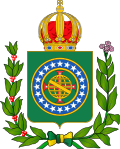
The Most Serene House of Braganza, also known as the Brigantine dynasty, is a dynasty of emperors, kings, princes, and dukes of Portuguese origin which reigned in Europe and the Americas.
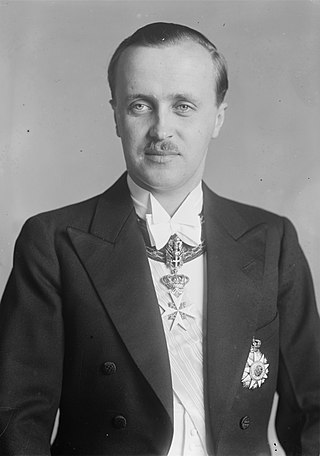
DomDuarte Nuno, Duke of Braganza was the claimant to the defunct Portuguese throne, as both the Miguelist successor of his father, Miguel Januário, Duke of Braganza, and later as the head of the only Brigantine house, after the death of the last ruling Braganza, King Manuel II of Portugal. In 1952, when the Portuguese Laws of Banishment were repealed, the Duke moved his family to Portugal, thus returning the Miguelist Braganzas to their homeland and becoming the first of the former Portuguese royal dynasty to live in Portugal since the abolition of the monarchy in 1910.

The War of Canudos was a conflict between the First Brazilian Republic and the residents of Canudos in the northeastern state of Bahia. It was waged in the aftermath of the abolition of slavery in Brazil (1888) and the overthrow of the monarchy (1889). The conflict arose from a millenarian cult led by Antônio Conselheiro, who began attracting attention around 1874 by preaching spiritual salvation to the poor population of the sertão, a region which suffered from severe droughts. Conselheiro and his followers came into attrition with the local authorities after founding the village of Canudos. The situation soon escalated, with Bahia's government requesting assistance from the federal government, who sent military expeditions against the settlement.
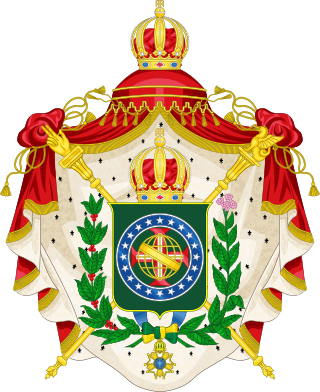
The Imperial House of Brazil is a Brazilian dynasty of Portuguese origin that ruled the Brazilian Empire from 1822 to 1889, from the time when the then Prince Royal Dom Pedro of Braganza declared Brazil's independence, until Dom Pedro II was deposed during the military coup that led to the Proclamation of the Republic in 1889.

The Head of the Brazilian Imperial House is a title used by the leader of the Brazilian imperial family, currently the House of Orléans-Braganza, a descendant branch of the House of Braganza. The title of the head of the imperial house is "Emperor de jure". The current head of the imperial house is Prince Bertrand of Orléans-Braganza, who took over as head of the imperial house on July 15, 2022, after the death of his brother, Prince Luiz of Orléans-Braganza.

Prince Dom Bertrand of Orléans-Braganza is the head of the Vassouras branch of the Imperial House of Brazil and pretender to the title of Emperor of Brazil since 2022.
Pedro Gastão of Orléans-Braganza was the Head of the Petrópolis branch of the House of Orléans-Braganza and a claimant to the defunct Brazilian throne in opposition to the Vassouras branch claim led by his cousins Princes Pedro Henrique and Luiz.

Prince Pedro Henrique of Orléans-Braganza, nicknamed The Expected Prince was the eldest son of Prince Luís of Orléans-Braganza and Princess Maria di Grazia of Bourbon-Two Sicilies, and head of the Vassouras branch of the Imperial House of Brazil from 1921 until his death in 1981.

DomPedro de Alcântara of Orléans-Braganza, Prince of Grão Pará was the first-born son of Dona Isabel, Princess Imperial of Brazil and Prince Gaston of Orléans, Count of Eu, and as such, was born second-in-line to the imperial throne of Brazil, during the reign of his grandfather, Emperor Dom Pedro II, until the empire's abolition. He went into exile in Europe with his mother when his grandfather was deposed in 1889, and grew up largely in France, at a family apartment in Boulogne-sur-Seine, and at his father's castle, the Château d'Eu in Normandy.

Pedro Luiz of Orléans-Bragança was the eldest son of Prince Antônio of Orléans-Braganza and Princess Christine de Ligne, being the grandson of Prince Pedro Henrique of Orléans-Braganza and Princess Maria Elisabeth of Bavaria.

The House of Orléans-Braganza is by legitimacy, the imperial house of Brazil formed in 1864, with the marriage of the heir to the Brazilian throne, Isabel of Braganza with Prince Gaston, Count of Eu. The House of Orléans-Braganza never reigned, as Brazil's pure Braganza monarch, Emperor Pedro II being deposed in a military coup d'état, under the pressure of the civilian republicans, in 1889. However, with the death of Isabel in 1921, as the last Brazilian pure Braganza, her descendants inherited the dynastic rights of the Brigantine dynasty over the defunct Brazilian throne.

The Imperial Order of the Rose was a Brazilian order of chivalry, instituted by Emperor Pedro I of Brazil on 17 October 1829 to commemorate his marriage to Amélie of Leuchtenberg.
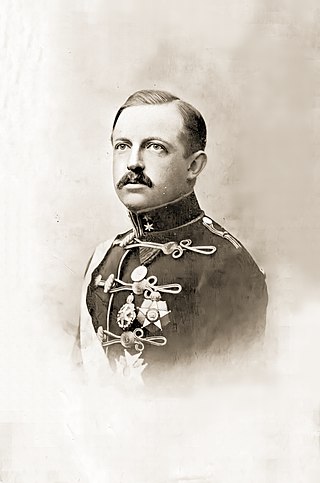
Prince Luís of Orléans-Braganza, nicknamed "the Perfect Prince", was the second son of Isabel, Princess Imperial of Brazil and Prince Gaston, Count of Eu, and patriarch of the Vassouras branch of the House of Orléans-Braganza. His grandfather, Pedro II of Brazil, was the last emperor of Brazil.

Maria Elisabeth of Bavaria, nicknamed "Empress-mother", was a German princess of the House of Wittelsbach, granddaughter of King Louis III of Bavaria and wife of Prince Pedro Henrique of Orléans-Braganza, one of two claimants to the headship of the Imperial House of Brazil.
A constitutional referendum was held in Brazil on 21 April 1993 to determine the form of government of the country. After the re-democratization of Brazil, an article in the new Constitution determined the holding of a referendum for voters to decide if the country should remain a republic or become a monarchy again, and if the system of government should be presidential or parliamentary. Voting for "monarchy" and "presidentialism" in tandem would annul one's vote.
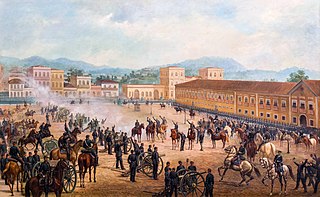
The Proclamation of the Republic was a military coup d'état that established the First Brazilian Republic on November 15, 1889. It took over the constitutional monarchy of the Empire of Brazil and ended the reign of Emperor Pedro II.

The Pantheon of the House of Braganza, also known as the Pantheon of the Braganzas, is the final resting place for many of the members of the House of Braganza, located in the Monastery of São Vicente de Fora in the Alfama district of Lisbon, Portugal. The pantheon's burials have included Portuguese monarchs, Brazilian monarchs, a Romanian monarch, queen consorts of Portugal, and notable Infantes of Portugal, among others.

Prince of Brazil was an imperial title of the Empire of Brazil bestowed upon the members of the Brazilian imperial family who were not the heir apparent or heir presumptive to the throne, by the 1824 Brazilian Constitution. After the overthrow of the Brazilian monarchy in 1889, the title was officially abolished by the First Brazilian Republic's 1891 constitution. Nevertheless, the title continues to be used as title of pretense by members of the House of Orléans-Braganza, the cadet branch and successor of the deposed Imperial House.

Prince Luiz Gastão of Orléans-Braganza was the eldest son of Prince Pedro Henrique of Orléans-Braganza and Princess Maria Elisabeth of Bavaria, and head of the Vassouras branch of the Imperial House of Brazil and pretender to the title of Emperor of Brazil from 1981 until his death in 2022.

Prince of Orléans-Bragança was a nobiliarchic title informally attributed to all direct and legitimate varony descendants of Louis Philippe Gaston de Orléans, count d'Eu and Imperial Prince Consort of Brazil, as consort of the last Imperial Princess of Brazil, Isabel of Braganza.






















